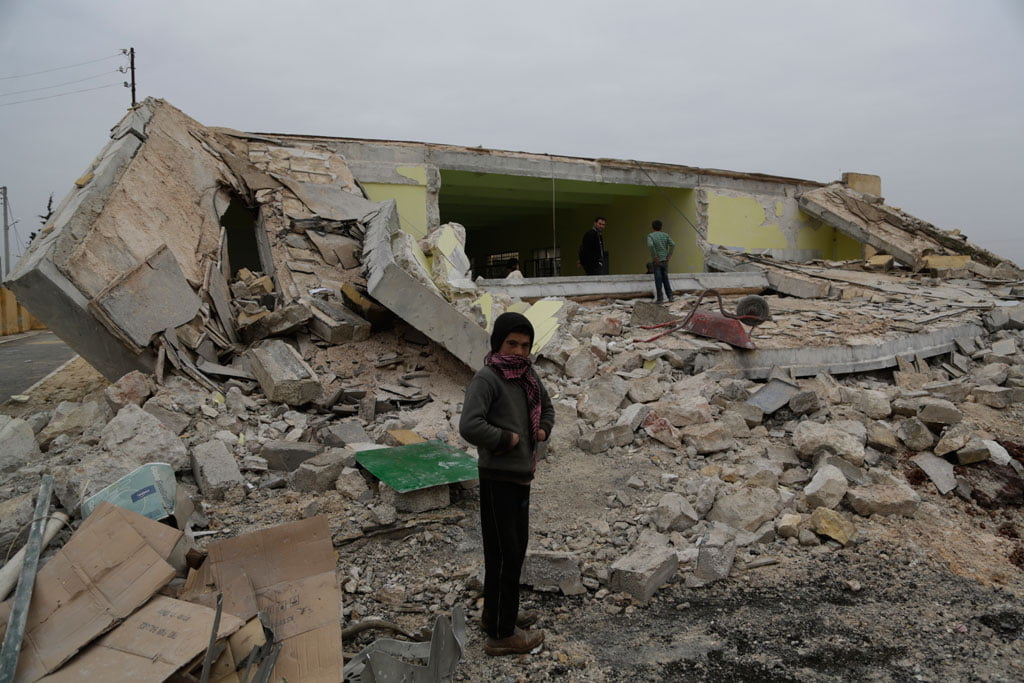The UN General Assembly kicked off its 72nd session this week, and its new president, Miroslav Lajčák of Slovakia, has already indicated that preventing deadly conflicts will be one of his top priorities. The theme for this year, he announced on Tuesday, will be “Focusing on people: striving for peace and decent life for all on a sustainable planet.”
“I wish to pay attention to what we can do better to prevent conflict. Because by avoiding conflict, we save human lives, and we also save money,” he told UN News.
The connection between peace and sustainable development is embedded directly in the Sustainable Development Goals. Goal number 16 calls for the international community to “significantly reduce all forms of violence and related death rates everywhere” by 2030 For his part, the new Secretary General Antonio Guterres has made an early priority to extrapolate the “synergies between the 2030 Agenda for Sustainable Development and sustaining peace.”
But one key challenge is how, exactly, can the international community measure progress against this goal?
Conflict-related deaths have increased in recent years – some experts are pushing to broaden the definition beyond battle deaths to include indirect killers, such as a lack of access to food, clean water and health care.
According to a new briefing paper by Small Arms Survey, “the current understanding of – and measurement approaches to – conflict-related deaths should be broadened to include more comprehensive mortality figures from conflict zones, particularly among forcibly displaced populations.”
The argument is that because conflict breaks down social, economic and health systems, the number of non-violent deaths in conflict-affected areas is far greater than in times of peace. (According to one measure, the burden of indirect deaths can be conservatively estimated at four times that of battle deaths.)
The ties between conflict, development and non-violent deaths became increasingly clearer this year when the world stared down the barrel of the “largest humanitarian crisis in the history of the UN.” More than 20 million people faced starvation from simultaneous food emergencies in South Sudan, Yemen, Nigeria and Somalia that all had their roots in violence. Meanwhile, a group of NGOs have estimated that more people have died in Yemen because the airport is closed than have died directly from conflict.
To that end, according to Small Arms Survey, a holistic approach to measuring the human cost of conflict would better inform policies and programs towards meeting the ambitious Sustainable Development Goals (SDG) adopted two years ago.


This kind of broad interpretation of what should properly count as conflict-related death is not universally shared, and the lack of a single definition is stalling efforts to create a reliable indicator to measure progress against this SDG target.
“It is true that these [indirect deaths from conflict] number far higher than direct deaths,” Rachel Kleinfeld, a senior fellow in democracy and rule of law at the Carnegie Endowment for International Peace, wrote in a paper. “However, a reduction in indirect deaths depends less on violence itself than on a multitude of other variables, including the state of a country’s medical infrastructure and roads, which should be captured in other SDG targets.”
To complicate matters further, even if there were some agreement on what qualified as a conflict-related death there are profound limitations to measuring them.
After the UN created the SDGs, teams of technicians went to work figuring out how to measure progress against all 162 indicators. As of now, there is no established methodology yet for measuring “conflict-related deaths per 100,000 population, by sex, age and cause,” according to the Inter-agency and Expert Group on SDG Indicators, which assigned that indicator to this SDG target. In other words, as of now, there is no reliable way to measure progress against this goal.
To be sure, limitations to measuring battle deaths do exist, such as governments withholding statistics for political reasons. However, according to Small Arms Survey, the main barriers to finalizing the indicator are disagreement over the definition of “conflict-related deaths” and challenges to measuring indirect deaths if they are included.
The most common way to measure indirect deaths is to subtract a baseline crude mortality rate during peacetime from the crisis crude mortality rate. But in many conflict zones, lack of reliable data makes establishing a baseline difficult, if not impossible.
According to the paper, researchers have improved estimation techniques and there is potential for further progress if international organizations, academic institutions and civil society cooperate. But the crux of the argument is that the UN should take this opportunity through the SDG framework to “capture the full range of mortality from armed conflict – particularly among displaced populations.”
The question is, will the data from such a pursuit be reliable enough to inform progress against the goal to “significantly reduce all forms of violence and related death rates everywhere?”
That question is central to achieving this very specific SDG target. But the broader issue of how one measures progress – what inputs and data are used – is one of the most vexing challenges facing the entire Sustainable Development Goals and 2030 Agenda.
